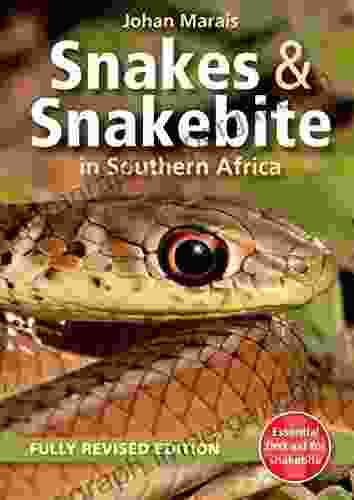Linear Selection Indices In Modern Plant Breeding

The pursuit of improving crop performance for increased productivity, adaptability, and resilience has been a central focus of plant breeding for centuries. In recent decades, the advent of quantitative genetics and the development of statistical techniques such as linear selection indices have revolutionized the field of plant breeding, enabling breeders to make more informed and precise selection decisions.
4.2 out of 5
| Language | : | English |
| File size | : | 53806 KB |
| Text-to-Speech | : | Enabled |
| Enhanced typesetting | : | Enabled |
| Word Wise | : | Enabled |
| Print length | : | 398 pages |
| Screen Reader | : | Supported |
This article delves into the concepts and applications of linear selection indices in modern plant breeding. We will explore the theoretical foundations, practical implementation, and the latest advancements in this powerful technique that has transformed the way we select for desirable traits in crops.
Theoretical Foundations
Linear selection indices are a statistical method used to combine information from multiple traits into a single index that represents the overall merit of an individual. The index is constructed based on the economic weights of each trait, which reflect their relative importance in the breeding objective.
The index is calculated as a weighted average of the standardized values of each trait, where the weights are the economic weights. The standardization process ensures that all traits are on the same scale, allowing for direct comparison and combination.
Practical Implementation
To implement linear selection indices in plant breeding, several steps are involved:
- Identify breeding objectives: Clearly define the specific traits and their relative importance in the breeding program.
- Estimate genetic parameters: Determine the heritability, genetic correlations, and phenotypic variances of the traits of interest.
- Calculate economic weights: Assign economic values to each trait based on their impact on the overall breeding objective.
- Construct the index: Calculate the linear selection index using the economic weights and estimated genetic parameters.
- Select individuals: Implement the index as the basis for selecting individuals for advancement in the breeding program.
Advantages and Limitations
Linear selection indices offer several advantages in plant breeding:
- Improved selection accuracy: By combining information from multiple traits, indices provide a more comprehensive assessment of an individual's merit.
- Increased genetic gain: Indices allow breeders to select for a combination of traits that maximize overall breeding value.
- Reduced selection costs: Indices can potentially reduce the number of individuals that need to be evaluated by focusing on a single index value.
However, there are also some limitations to consider:
- Reliance on accurate estimates: The accuracy of the index depends on the reliability of the estimated genetic parameters.
- Difficulty in assigning economic weights: Determining the appropriate economic weights can be challenging and may require economic analysis.
- Potential for bias: If the economic weights or estimated genetic parameters are biased, the index may not accurately reflect the true merit of individuals.
Advancements and Future Prospects
Research in linear selection indices is ongoing, with advancements focusing on addressing limitations and exploring new applications. Some notable advancements include:
- Genomic selection indices: Incorporating genomic information into indices has improved selection accuracy and reduced the need for extensive phenotyping.
- Multi-environment indices: Indices that account for performance across multiple environments enhance selection for stable traits.
- Advanced statistical methods: Machine learning and Bayesian approaches are being explored to develop more sophisticated and robust indices.
Linear selection indices have become an indispensable tool in modern plant breeding. They provide breeders with a powerful approach to select individuals that possess the optimal combination of traits desired for crop improvement. As research continues to refine and advance these techniques, we can expect further breakthroughs in the field of plant breeding, leading to the development of more productive, resilient, and sustainable crops.
4.2 out of 5
| Language | : | English |
| File size | : | 53806 KB |
| Text-to-Speech | : | Enabled |
| Enhanced typesetting | : | Enabled |
| Word Wise | : | Enabled |
| Print length | : | 398 pages |
| Screen Reader | : | Supported |
Do you want to contribute by writing guest posts on this blog?
Please contact us and send us a resume of previous articles that you have written.
 Book
Book Novel
Novel Page
Page Chapter
Chapter Text
Text Story
Story Genre
Genre Reader
Reader Library
Library Paperback
Paperback E-book
E-book Magazine
Magazine Newspaper
Newspaper Paragraph
Paragraph Sentence
Sentence Bookmark
Bookmark Shelf
Shelf Glossary
Glossary Bibliography
Bibliography Foreword
Foreword Preface
Preface Synopsis
Synopsis Annotation
Annotation Footnote
Footnote Manuscript
Manuscript Scroll
Scroll Codex
Codex Tome
Tome Bestseller
Bestseller Classics
Classics Library card
Library card Narrative
Narrative Biography
Biography Autobiography
Autobiography Memoir
Memoir Reference
Reference Encyclopedia
Encyclopedia Jo Roberts
Jo Roberts Jennifer A Reich
Jennifer A Reich Jerry Maginnis
Jerry Maginnis Jo Bradford
Jo Bradford Jerry Murland
Jerry Murland Joe Lightfoot
Joe Lightfoot Joanne Palmisano
Joanne Palmisano Joan M Farrell
Joan M Farrell Jeffrey Waincymer
Jeffrey Waincymer Jennifer Newcomb Marine
Jennifer Newcomb Marine Jim Forest
Jim Forest Jody Condit Fagan
Jody Condit Fagan Joanna Hodge
Joanna Hodge Jerome E Groopman
Jerome E Groopman Jesse Braun
Jesse Braun Joanna Smith
Joanna Smith Jesse Ferris
Jesse Ferris Jessica Donati
Jessica Donati Jeff Strickland
Jeff Strickland Joanna Poblete
Joanna Poblete
Light bulbAdvertise smarter! Our strategic ad space ensures maximum exposure. Reserve your spot today!

 Clarence BrooksAdvanced Data Analysis in Neuroscience: Unlocking the Secrets of the Brain
Clarence BrooksAdvanced Data Analysis in Neuroscience: Unlocking the Secrets of the Brain
 David PetersonThe Great Lessons in Life for Dad: A Journey Towards Unconditional Love,...
David PetersonThe Great Lessons in Life for Dad: A Journey Towards Unconditional Love,...
 Henry HayesGolden Days For Boys And Girls Vol XII Jan 1891: A Literary Journey for the...
Henry HayesGolden Days For Boys And Girls Vol XII Jan 1891: A Literary Journey for the... Nathaniel HawthorneFollow ·15.7k
Nathaniel HawthorneFollow ·15.7k Kelly BlairFollow ·4.8k
Kelly BlairFollow ·4.8k Bernard PowellFollow ·9.6k
Bernard PowellFollow ·9.6k Federico García LorcaFollow ·9.5k
Federico García LorcaFollow ·9.5k Jerry WardFollow ·17k
Jerry WardFollow ·17k Leslie CarterFollow ·15.6k
Leslie CarterFollow ·15.6k Colton CarterFollow ·7.1k
Colton CarterFollow ·7.1k Emilio CoxFollow ·9k
Emilio CoxFollow ·9k

 Christian Barnes
Christian BarnesUnleash Your Creativity: Build Interlocking 3D Animal and...
Discover the Art of Paper...

 Terry Bell
Terry BellUnveiling the Secrets of Winning: A Comprehensive Guide...
In the realm of chance and fortune, the...

 Albert Camus
Albert Camus101 Things That You Should Do Before Leaving The House In...
Starting your day right is...

 Anthony Burgess
Anthony BurgessForcing Move 2024 Volume: Unleash Your Inner Grandmaster
Embark on an extraordinary chess...
4.2 out of 5
| Language | : | English |
| File size | : | 53806 KB |
| Text-to-Speech | : | Enabled |
| Enhanced typesetting | : | Enabled |
| Word Wise | : | Enabled |
| Print length | : | 398 pages |
| Screen Reader | : | Supported |










